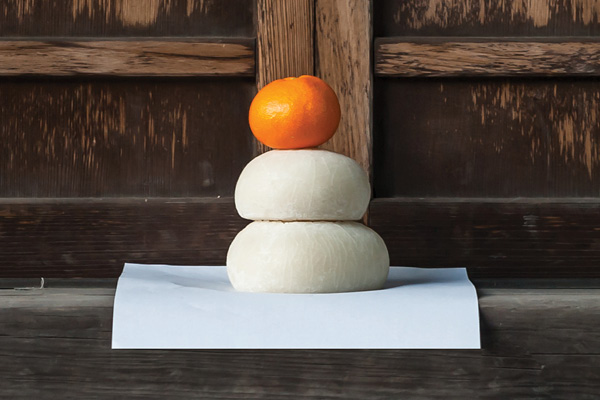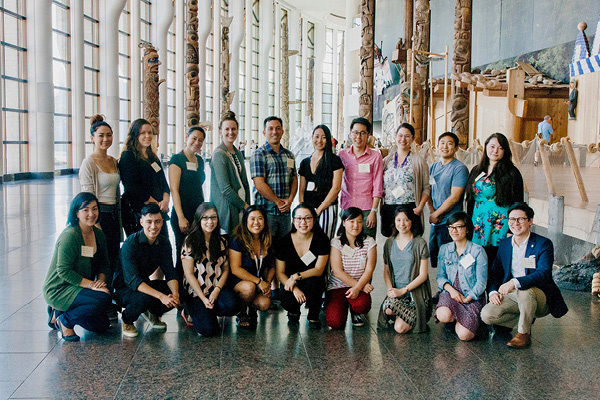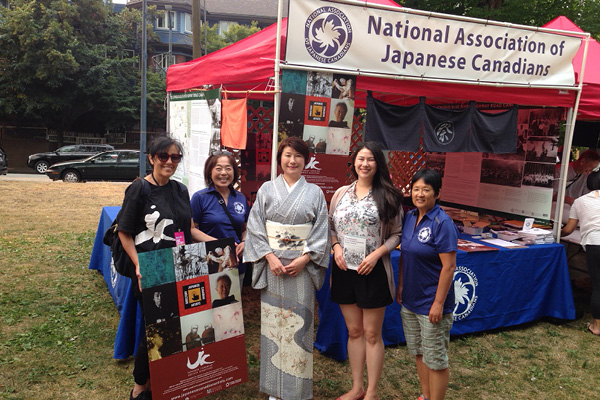 In The Triumph of Citizenship. The Japanese and Chinese in Canada, 1941-67 (UBC Press, 2007), historian Patricia E. Roy describes the Government action in 1942 as evacuation (evacuate: remove people from a place of danger, Oxford), due to “fear that frightened and angry white British Columbians might violently attack Japanese Canadians and their property.” She also argues, “In fact, only about 800 men were interned…” (p.15) She does not use the term, internment (intern: oblige a prisoner, alien, etc. to reside within prescribed limits, Oxford), which Japanese Canadians acknowledge as their experience.
In The Triumph of Citizenship. The Japanese and Chinese in Canada, 1941-67 (UBC Press, 2007), historian Patricia E. Roy describes the Government action in 1942 as evacuation (evacuate: remove people from a place of danger, Oxford), due to “fear that frightened and angry white British Columbians might violently attack Japanese Canadians and their property.” She also argues, “In fact, only about 800 men were interned…” (p.15) She does not use the term, internment (intern: oblige a prisoner, alien, etc. to reside within prescribed limits, Oxford), which Japanese Canadians acknowledge as their experience.
In pondering over why this interpretation, especially at this time in history, after Redress, I referred back to another book written by Patricia Roy, J. L. Granatstein, et al, titled, Mutual Hostages. Canadians and Japanese during the Second World War. (UTP, 1990).
It became clear to me that the (problematic) wartime history of Japanese Canadians as currently exhibited in the Canadian War Museum is influenced by these historians’ interpretations. Interestingly, Mr.Granatstein is the former Director of Canadian War Museum, and Ms. Roy a member of the Museum Board.
I recall walking along a display wall focused on the Pacific War including images of brutalized Hong Kong Prisoners of War, and texts proclaiming the cruelty of the Japanese soldier, ending with a three-dimensional figure of an attacking said soldier. At this point, there was a projection on the floor of a Japanese military flag (now removed), which the viewer is expected to step upon. In turning, I found the Japanese Canadian exhibit, Forced Relocation.
So the two exhibits face each other, one about the Japanese military that brutalized prisoners and the other, the Canadian government’s decision to `evacuate’ Japanese Canadians. An assumption made in Mutual Hostages is that “both wartime Canada and Japan looked on the Japanese (referring to Japanese Canadians) and Canadians (that is, Japan’s Canadian Prisoners of War) under their control as mutual hostage,” (my bracketed clarifications), with qualification that “this is not to suggest that the Canadian and Japanese governments’ treatment of their hostages was equivalent, it was not.” (p. ix)
The introduction to the Japanese Canadian exhibit states:
Japan’s early victories made British Columbians fear an attack, possibly assisted by local Japanese-Canadians. The war also aroused hatred for Japanese-Canadians and led to racially motivated pressure for their removal from the west coast…Allowed to take few possessions with them, the evacuees then saw their remaining property confiscated…
There is no mention here of the January 8, 1942 Conference at which representatives of RCMP and Armed Forces advised the Prime Minister that there was no security threat from Japanese Canadians, and nothing about Japanese Canadians who had voluntarily enlisted and served in the Canadian Forces, despite their families’ continued incarceration.
Further, no attempt is made to relate Redress as an acknowledgement of Government’s betrayal of democratic principles. A small photo of the signing of the Redress Agreement is placed well below eye level.
The Redress Acknowledgement reads that the “treatment of Japanese Canadians during and after World War II was unjust and violated principles of human rights as they are understood today.” (my italics). The word `evacuation’, (euphemistically) used by the Government of Canada at that time is no longer in use. It is recognized that the removal of West Coast Japanese Canadians in 1942 had nothing to do with their security but, as Ann Gomer Sunahara (The Politics of Racism, 1981) appropriately attributes, to a politics of racism.
As one who experienced with my family the struggles of internment and subsequent dispersal and in recent years becoming more aware of our stories being written by others who never experienced these events but interpret this history, I believe strongly that Japanese Canadians must become more vigilant, individually, and as groups, to intervene critically. When our histories are (mis)interpreted, and prejudicial language is used, by those in possession of power, in exhibits, or as entries on plaques designating our history at heritage sites, and in various publications and media which use our lives as subject matter, such representations must be examined vigorously to make sure stakeholders were consulted, and the information conveyed are based on properly documented events, not biased assumptions.
In closing, I would recommend participation in sessions being offered at the 2008 Redress Anniversary event, in September, such as Telling Stories, Questioning Japanese Canadian Identities: Research, Writing, Visual Art as Cultural Practices, a panel discussion moderated by Dr. Kirsten Emiko McAllister (SFU); Beyond Anti-Racism, with keynote speaker, Dr. Philomena Essed (Antioch University) and Respondents including Dr. Audrey Kobayashi (Queens University) and Monika Kin Gagnon (Concordia University); and Redress: Never Too Late, moderated by Arthur K. Miki. (For registration information, www.redressanniversary.najc.ca/redress.



